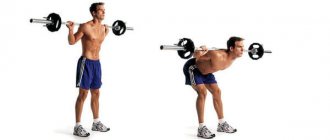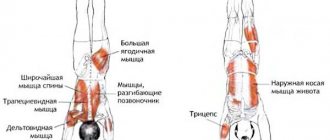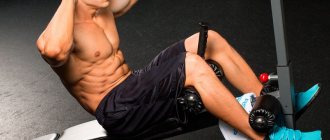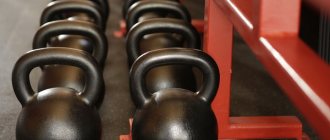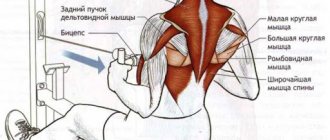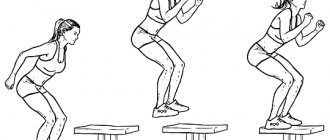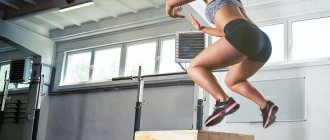The Russian language is rich in words that can easily mislead. At first it may seem that the lexeme is of foreign origin. However, in fact, this is the root word of Russian speech. It stands in the ranks of vocabulary words. Its spelling does not explain any particular rule. To figure out how to spell the “exercise” correctly, it is necessary to study the origins of the morpheme being analyzed. Etymology will help determine the correct use of the conjunction in writing.
What's the rule
This “opposite” term is not subject to any law of grammar. Its use on paper can only explain its origin. The verb “exercise” has its own rather fascinating history of development. In modern speech, the verb is not used, but instead its almost double is often used in the form of the lexeme we are analyzing. There are several options for the occurrence of a lexical unit:
- Originally there was a morpheme in Cyrillic - “exercise”. But as we know, word formation often occurs, but this is one of the rare cases of not adding a prefix or suffix, but, on the contrary, splitting off part of a speech unit.
- According to the second, no less original version of the etymology, there was a replacement of the letter in the middle of the conjunction, namely the letter “-я-” with the alphabetic element “-a-”. Judging by this variant, the original lexeme looked like this: “harness”.
Based on both versions of the historical origin of the term, it appeared due to suffixal word formation from the verb “exercise”. This article showed us how to correctly write “exercise” or “exercises”.
Examples
- In the physiotherapy room, patients performed various exercises, including for the limbs, this helped develop joints and improved skeletal motor skills.
- This year, there was a long quarantine in schools, but the children did not just relax at home; for two weeks they were given various exercises in all subjects in order to keep up with the curriculum.
- I spent a long time trying to persuade my mother to let me play outside with the kids, but she stubbornly insisted that I had to finish the last exercise in my math homework.
- For greater effect and consolidation of the results during training, we do one exercise in several approaches, only in this case can we achieve the desired result.
How wrong
The written use of a unit of speech with the letter “-o-” in the second syllable is considered incorrect. It is also incorrect to put the letter “-e-” at the end - if it is plural and the letter “-i-” in the case of a singular conjunction.
How to train properly
- Without following a proper diet, the effect of physical exercise will not bring the desired result and may simply turn out to be an illusion;
- Eliminate food (you need to drink water!), and even dietary snacks, 2 hours before and 1 hour after training;
- The first half of the day is the ideal intense time for training. The body and muscles rested at night, and the metabolism works at full strength. According to researchers, 20% more fat can be burned in the morning than in the evening;
- The optimal duration of the lesson is from 40 minutes to 1.5 hours; when choosing a training, “listen” to your well-being, focus on your physical capabilities;
- Initial moderation in exercise is an important principle. Build it up gradually to ease into the training process. Do not force your muscles to work unusually and hard right away, this is fraught with negative consequences;
- Taboo on daily training. Your muscles will not have time to rest, and instead of healthy weight loss and good health, you will become weak and feel like “melted ice cream.” Classes 2-3 times a week are enough. If you want quick results, do it every other day;
- An excellent choice for combating obstructive fat in a short time is aerobic training;
- Along with cardio training, strength exercises are gradually added to the program. They will stimulate fat burning processes and accelerate metabolism, strengthen muscles, and prevent the skin from sagging;
- Alternating the load on different muscle groups will bring you closer to achieving results. There is no need to repeat the same exercises at every workout, otherwise the muscles will not have time to recover;
- The correct weight of weights is the key to intense strength training without harm to health. Getting started with a weight at which 20-30 repetitions of one exercise is not a problem. Moreover, the latter must be performed to the maximum extent possible;
- the presence of basic exercises in the program is a must. Practice the technique of performing them in the best possible way;
- Proper breathing is another important principle. Watch your breathing. At the moment of greatest tension, exhale.
Climbing Squats
It's no secret that footwork in rock climbing is no less important than hand work. And in some cases, the legs are even more important. Therefore, squats and other similar exercises (lunges and rolls) are considered basic in rock climbing. You won't be able to effectively perform a crunch or a toe roll if your knees don't bend. You won't be able to do leg rolls if you don't do pistols regularly.
Exercises required for climbing training
- Classic squats
- "Squat Monkey" - wide stance squats
- "Pistols" - one leg squats
- Rifles
- "Triangles" - side lunges
Most often, these exercises are performed during warm-up or, conversely, closer to the end of the workout - between the main climbing and stretching, because in the technique of footwork in rock climbing, flexibility is no less important than strength.
If the article was useful, share it on social networks and write comments.
Do everything gradually
The main thing is not just to start doing physical exercises. The goal is to maintain your positive outlook in the long term. Therefore, our recommendations will not be overly strict. Otherwise, the effect will be the same as with diets: when people get tired of limiting themselves in everything and “break down,” quickly losing the results obtained.
Start small and set realistic goals . Doing the exercises correctly is not at all difficult. Gradually increase the duration and intensity of your workouts. For each stage you complete, you can “reward” yourself (in healthy ways, of course).
Etymology and spelling
Etymology is the science of the origin of words, or its description for a given specific word. In our case, it is foreign, taken from English. According to the general principles of linguistics, most of the original grammatical features and forms (morphemes) are assigned to borrowed words in the recipient language. This also applies to word formation, if its patterns do not contradict the local ones.
Despite all their differences, the languages English and Russian are Indo-European, i.e. their ancient grammatical basis is the same. Therefore, in our case, it turns out to be possible to accurately transfer the methods of formation of the morphemes “training” from the autochthon (original language) to the recipient.
In English we have the following sequence: “to train” (to train) – “trainer” (coach) – “training” (training). It is a two-syllable word: the diphthong “-ai-” is pronounced as one sound.
In the original, the second syllable contains the vowel “i” . It is read, according to the International Phonetic Alphabet IPA, in our case with aspiration: [ɪ] (ship). This is a very difficult sound for the Slavs, more difficult than the famous “th”. The voiceless English [ɪ:] (shield, shift) is more similar to the Russian “and”. But neither one nor the other is in any way similar to the drawn-out [a:] (man, bad), which sounds like a cross between our “e” and “e”.
In all word forms “training” the “and” in the second syllable remains as it is in the original. To check, let’s take a grammatically similar original word, say, “to mount” (to mount, assemble structures). Add “-ing” and you get “mounting” (assembly, mounting, mounting) - everything is correct.
Russian language training exercises with answers. How to do an exercise in Russian?
To successfully pass the exam paper in the Russian language, the exercises and tasks in which may have different rules, you need to know the grammar of the Russian language. Completing various exercises and tests will help you prepare for certification. Below are training exercises in the Russian language.
Spelling exercises
There are a great many spelling rules in the Russian language. The spelling of prefixes, roots, compound words, capital letters, endings, suffixes is not a complete list of spellings that the Russian language is rich in. Exercises with answers and explanations of some complex spellings are given in the table.
Punctuation exercises
Punctuation causes difficulties when passing the Russian language exam. An exercise on punctuation requires both knowledge of syntax and the presence of punctuation intuition. The table contains exercises on some punctuation rules.
Orthoepy exercises
The spelling dictionary and training tasks given below will help you solve an exercise in the Russian language, in which you need to correctly place stress on words.
Exercises to identify grammatical errors
When working on the Russian language, the exercise of finding grammatical errors causes particular difficulties. Such errors are very common: incorrect formation of the word form, incorrect construction of phrases and sentences, and others. Tasks for identifying grammatical errors are given in the table below.
Exercises to identify speech errors
In a final work on the Russian language, an exercise that requires a detailed answer is fraught with many dangers; numerous speech errors are made in it. They are otherwise called stylistic errors, since they are associated with the incorrect use of words. Below, in the table, tasks for identifying speech errors are given.
Finding lexical means of expression
Many texts of exercises in the Russian language contain synonymous series, phraseological units, outdated vocabulary, vernacular or contextual synonyms and antonyms - all these are lexical means of expressiveness. The wording of the task may be different, for example, write out phraseological units from the text.
Finding means of communicating proposals
The task of finding means of communication is provided for in the certification work in the Russian language. The exercise is aimed at identifying students' level of skill in determining the grammatical coherence of a text. Means of communication are morphological, lexical and syntactic. The algorithm will tell you how to do an exercise in the Russian language to find means of communication:
- Read the text carefully, especially the sentence in which you need to find a means of communication.
- Remember what means of communication there are.
- Find the means of communication, most often it is located at the beginning of the sentence.
Finding expressive means
Every year, in the examination work in the Russian language, the task of identifying figurative and expressive means becomes more complicated. The table below provides exercises for finding means of expression.
Completing exercises and tests helps you prepare for certification. We have provided training exercises for the Russian language that may be useful.
Control your breathing
When we do exercises, we very often forget about the most important thing - breathing . Improper breathing restricts oxygen access to the brain. The most minor consequences of such a disorder may be a slowdown in the process of weight loss, shortness of breath and tingling in the side. But there are also more serious ones: increased blood pressure, the threat of a heart attack or stroke.
For different types of physical activity, there are different rules for breathing techniques:
- If this is a strength training, the effort must be done while exhaling.
- Cardio training: There must be a consistent rhythm between body movements (running, walking, cycling) and breathing rate. That is, for each inhalation and exhalation there should be 3-4 steps with slow movement. On average: 1-2 steps for each inhalation and exhalation. The rhythm is selected individually.
When performing exercises to develop flexibility, inhalation is done in positions in which the chest expands, and exhalation is done when it contracts.
The most difficult technique is breathing in water. And it depends on the style with which you swim. If crawl, inhale at the end of the stroke, when the face is turned to the side and is above the water. If breaststroke, at the moment of raising your head above the water.
Training shouldn't cause unpleasant emotions
Physical activity requires some effort, but sport should not turn into torture. You can only perform exercises correctly when your brain receives positive signals.
This is why it is so important to choose exercises that you enjoy. Try signing up for group classes with your friends. Work out to the accompaniment of pleasant music or do exercises outdoors.

